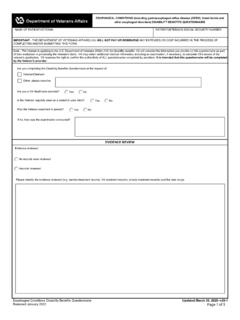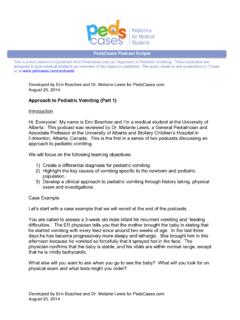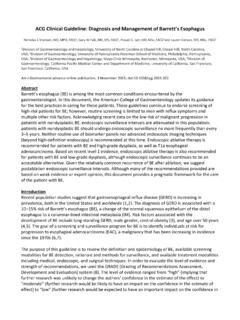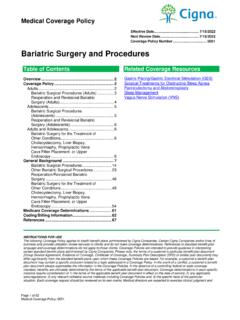Transcription of THE FATAL FIVE - IntellectAbility
1 THE FATAL five The FATAL five refers to the top five disorders linked to preventable deaths of individuals in congregate care settings or in community based residential settings. While the issues can differ in order of frequency depending on the population being represented, the five conditions most likely to result in death or health deterioration for persons with Intellectual and Developmental disabilities are: Bowel Obstruction GERD Aspiration Dehydration Seizures Bowel Obstruction is the most common cause of preventable death in community settings. The most important root cause of bowel obstruction is the use of multiple drugs with constipating side effects. Add to this the fact that most of us have dietary habits that contribute to the problem, chief among them, diets that are low in fiber and adequate fluids. Ironically, medications intended to improve elimination often place the individual at higher risk for impaired bowel function.
2 Adequate active movement or exercise is also important to the gut. Controlling these factors, along with training caretakers to recognize the signs and symptoms of bowel problems at the earliest moment can greatly reduce occurrences of death from bowel obstruction. gastroesophageal reflux disease (GERD) is the backing up of stomach contents, including acid, into the esophagus. GERD is undiagnosed in the majority of persons, including those without disabilities, until major harm has been done to the bottom of the esophagus. Medications that cause constipation also contribute to GERD. Individuals who are overweight, particularly when they carry excess weight around the abdomen or wear clothing that is too tight have a higher risk of GERD. Ill-advised dietary choices, immobility and improper positioning also contribute greatly to the incidence of GERD. As this disorder continues without treatment discreet or frank aspiration, life-threatening GI bleeding and esophageal cancer become increasingly common.
3 Aspiration is the most common cause of death in institutional settings, including nursing homes and large group care settings for persons with IDD. Aspiration often begins subtly and damages increasing portions of the lungs. Aspiration pneumonia is a common discharge diagnosis following hospitalization. As the person s respiratory status becomes compromised feeding tubes, which carry their own increased risks, are often utilized. Other factors which may lead to aspiration are poor body positioning, particularly in individuals who cannot control their own movements well, and behavioral issues related to eating. Individuals who do not swallow well are particularly likely to refuse fluids or indicate fear when they get them, often resulting in dehydration. Dehydration is also likely when staff or family try to restrict fluids to prevent incontinence, not realizing that lack of fluids can contribute to constipation and increased seizure frequency, not to mention drug toxicity and other health problems.
4 Seizure deaths can occur from drug toxicity or from uncontrolled seizures. SUDEP, or sudden unexplained death in epilepsy, occurs on a fairly regular basis and for reasons that medical science has yet to explain. Life expectancy for persons with active seizure disorders has shown to be up to 10 years less than those without epilepsy. Must-see Webinar ! THE FATAL five : Preventing Preventable Deaths in Community Settings Presented by Karen Green McGowan, RN, CDDN Health Risk Screening, Inc. and New York State Rehabilitation Association (NYSRA) collaborated on a series of free, hour-long educational webinars presented by Karen Green McGowan. Here is a link to a recorded webinar, "The FATAL five ": Preventing Preventable Deaths in Community Settings. The webinar received outstanding feedback and numerous agencies have begun using the presentation as part of staff training. The information covered in the webinar is applicable to clinical, administrative and program services professionals.
5 Watch the webinar, use the information and feel free to forward the above link to any colleagues you feel would be interested in or benefit from the information presented. In future issues of this newsletter we will address several of these issues individually and in more depth, including a discussion of ways to prevent the incidence of these and other issues that complicate the care of those we serve.






